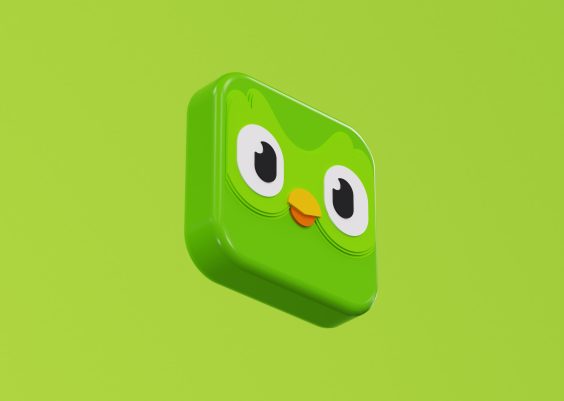Arabic calligraphy is a timeless art form that adds a unique and elegant touch to design projects. Whether you’re creating graphics, websites, or print materials, the right Arabic font can significantly enhance the visual appeal of your work. In this guide, we’ll explore some of the best free Arabic fonts available in 2024, allowing designers to access high-quality typefaces that beautifully capture the essence of the Arabic script.

1. Cairo
Cairo is a modern and versatile Arabic font designed by Mohamed Gaber. Its clean lines and balanced proportions make it suitable for a wide range of design applications. With support for various languages and a stylish aesthetic, Cairo is an excellent choice for both digital and print projects.
2. Lateef
Lateef, designed by SIL International, is a calligraphic Arabic font with a distinct and artistic flair. Its flowing strokes and intricate details make it ideal for projects where a touch of traditional elegance is desired. Lateef is open-source and supports multiple languages, making it a versatile option for creative endeavors.
3. Amiri
Amiri, created by Khaled Hosny, is a classical Arabic typeface with a contemporary twist. Inspired by the Naskh style, Amiri features a harmonious balance of thick and thin strokes, making it highly readable. With extensive language support and thoughtful design, Amiri is a great choice for both digital and print design projects.
4. Hacen Beirut
Hacen Beirut, designed by Nasri Khattar, is a bold and expressive Arabic font that captures the essence of calligraphy. Its dynamic strokes and unique character shapes make it stand out in design compositions. Hacen Beirut is well-suited for projects that demand a distinctive and impactful visual presence.
5. Droid Arabic Naskh
Droid Arabic Naskh is a part of the Droid font family and is specifically tailored for Arabic script. Designed by Pascal Zoghbi, this font is characterized by its clarity and legibility. It is an excellent choice for digital interfaces, websites, and mobile applications, where readability is a top priority.
6. Reem Kufi
Reem Kufi, designed by Reem Alawadhi, is a modern Kufic-style Arabic font with a geometric and structured appearance. This typeface is suitable for contemporary design projects that seek a clean and organized look. Reem Kufi supports multiple languages and offers a unique take on traditional Kufic script.

7. Tajawal
Tajawal, designed by Boutros Fonts, is a versatile and contemporary Arabic font family. With its balanced proportions and modern styling, Tajawal is well-suited for a wide range of design applications, including branding, editorial design, and digital interfaces. The font family includes various weights, offering flexibility in design compositions perfect for brand name.
8. Katibeh
Katibeh, created by Iranian designer Reza Bakhtiarifard, is an elegant and stylized Arabic font inspired by traditional Iranian calligraphy. Its unique character shapes and flowing strokes make it a distinctive choice for creative projects. Katibeh is well-suited for headlines, logos, and other design elements that require a touch of sophistication.
9. Lateef
Lateef is an open-source Arabic font designed by SIL International. It features a calligraphic style with intricate details, making it suitable for projects that demand a touch of traditional elegance. Lateef supports various languages and is freely available for both personal and commercial use.
10. Tajawal
Tajawal is a contemporary Arabic font family designed by Dr. Mamoun Sakkal. With its clean and modern aesthetic, Tajawal is versatile and suitable for diverse design projects. The font family includes various weights and styles, providing designers with flexibility in creating visually appealing compositions.
Using Arabic Fonts in Design
When incorporating Arabic fonts into your design projects, consider the following tips:
1. Legibility
– Ensure that the chosen Arabic font is highly legible, especially if it will be used for body text or small sizes. Legibility is crucial for effective communication.
2. Consistency
– Maintain consistency in font usage throughout your design to create a cohesive and harmonious visual identity.
3. Pairing with Latin Fonts
– If your design involves both Arabic and Latin scripts, choose fonts that complement each other. Ensure a harmonious blend for a unified look.
4. Contextual Awareness
– Consider the cultural and contextual nuances associated with different Arabic fonts. Choose a font that aligns with the tone and purpose of your design.
5. Hierarchy
– Use different weights and sizes within the chosen Arabic font family to establish hierarchy and emphasize key elements in your design.
Choosing the right Arabic font can elevate your design and add a distinctive touch that resonates with the rich tradition of Arabic calligraphy. The free Arabic fonts listed above offer a diverse range of styles, from traditional calligraphy to modern and geometric designs. Whether you’re working on branding, editorial design, or digital interfaces, these fonts provide an excellent foundation for creating visually stunning and culturally resonant projects. Explore the unique characteristics of each font, experiment with pairings, and infuse your designs with the beauty of the Arabic script.




